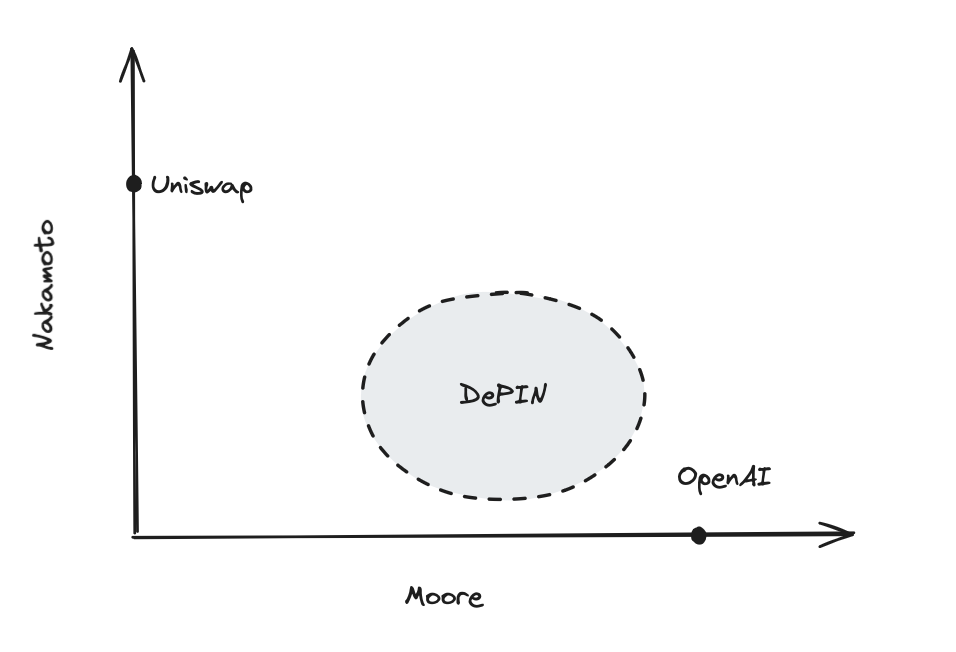Nakamoto is orthogonal to Moore
If you think about it, crypto is orthogonal to Moore's Law.
Crypro is designed to add friction to the things that Moore's Law made frictionless or trivial.
For example, Bitcoin is designed to countermeasure the addition of computing power by increasing block difficulty, and NFTs are the answer to frictionless media replication enabled by computers.
Running the current version of Microsoft Office, or even Chrome on a computer built 15 years ago is painful if not impossible. A typical 15 years old computer is not powerful enough to handle today's programs because they depend on 10x more power than was available back then. (Just take a look at Geekbench Benchmarks for Macs comparing Apples to Apples.)
On the other hand, the Bitcoin codebase has not changed much since 2008 -not in ways that require additional processing power. Similarly, the exponential increase in Ethereum transaction bandwidth thanks to L2s was not a result of increased compute power.
The Moore-Nakamoto plain
We can consider a two-dimensional plain, where one axis indicates the impact of compute improvements and the other the impact of crypto technology. I'll call this the Moore-Nakamoto plain.
Where do various projects and technologies go on this plain?
For example, traditional video games are not impacted at all by advances in crypto, but CPU/GPU power increase or efficiency has a dramatic impact on them. Compare this to a game like Axie Infinity, where the quality of graphics obviously depends on the available computing power, but advances in crypto technology, like L2s or wallet abstraction are also very important.

Here is an other example comparing Uniswap, DePIN and OpenAI.
- OpenAI depends 100% on the cost of compute and advances in crypto have no effect on it.
- Uniswap is not affected by advances in compute power, but advances in crypto have a huge impact on it.
- DePIN projects are affected by both.

I think that the Moore-Nakamoto plain is a great tool to map and compare projects, and to analyze how advances in compute and crypto will affect them in the future.
